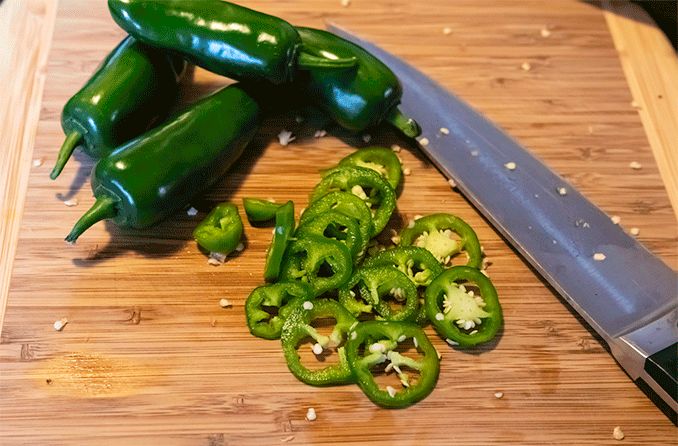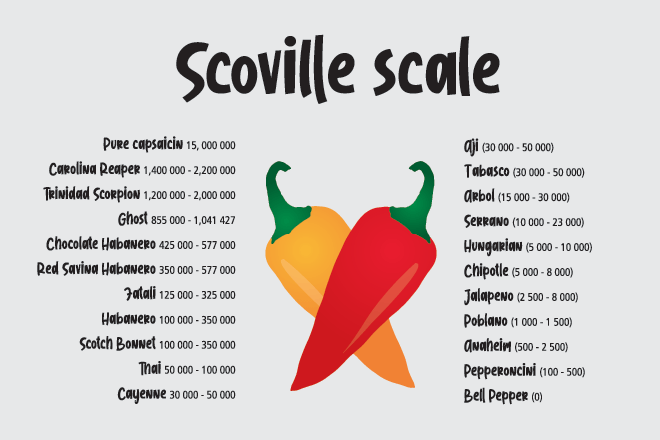Jalapeño in the eye? Don’t use milk!

There’s nothing quite like the burn of jalapeño in the eyes, and if you’re looking for relief, know this first: Putting milk in your eyes to cool the pain of jalapeño peppers is a bad idea. Articles recommending the milk cure for jalapeño eye pain tend to lack one crucial factor: Expert advice.
We asked Dr. Brian Boxer Wachler, a Beverly Hills, California, ophthalmologist and member of the All About Vision medical advisory board, what to do if handling jalapeño peppers leads to eye pain:
“Rinse with a sterile solution, ideally, or tap water as an alternative — but not milk,” he advises. “After the rinsing, use artificial tears to help soothe your eyes.”
In short, the basic first aid for jalapeño burn in the eyes is to:
Wash your hands.
Avoid rubbing your eyes — this just makes things worse.
Rinse continuously with a sterile solution (products labeled “eye wash”) for a few minutes. If you have no sterile solution, use tap water.
Lubricate with artificial tears or similar-style eye drops to soothe the pain.
Why is milk the wrong fix for jalapeños in the eyes?
What’s wrong with milk? Isn’t it essential to the survival of mammals? Of course. Milk is awesome — as long as you’re drinking it (indeed, suckling mother’s milk seems to have a pain-relief effect for babies who breastfeed).
It just doesn’t belong in your eyes.
The same advice applies whenever there’s a risk of eye irritation. For instance, people attending political protests may be advised to take a carton of milk along just in case the police use tear gas or pepper spray.
Not the best choice, according to Prevention magazine. “With milk, I have a concern that it’s not really sterile,” Sven-Eric Jordt, PhD, an associate professor of anesthesiology at Duke University, told the magazine. “There’s the danger of infection, of contamination, and there’s bacteria growth,” said Jordt, who co-wrote a journal article on chemicals used for riot control.
If you click around on internet search engines long enough, you’ll find people in online forums mentioning the milk cure for jalapeño in the eye. Some might say it worked fine for them.
But you need to be skeptical of these claims for the same reason you instinctively give milk from the fridge a healthy sniff to make sure it hasn’t gone bad. With milk, there always seems to be a race to drink it before bacterial growth takes over and it spoils.
That’s because there’s no way to kill all the bacteria in milk, even when it’s pasteurized. Any milk that touches your eyes has the potential to cause an eye infection, which adds all sorts of risks that are best avoided.
Why a sterile eye rinse is ideal
Your eye sockets are warm and moist, an optimal environment for bacterial growth. Commercial eyewash products and saline solutions for contact lenses are preferable because they come sterile from the manufacturer — free of infectious bugs.
Eye doctors recommend using tap water as an eye rinse only if nothing better is available. In their opinion, water is better than milk when it comes to rinsing your eyes after contact with jalapeño peppers. But even tap water has hazards: It can irritate the surface of the eyes and it might also contain toxins and infectious bacteria.
These points underscore the importance of stocking your home first aid kid with a sterile eyewash solution and artificial tears. If you enjoy cooking hot, spicy foods, then you need to be ready for painful pepper encounters.
What makes jalapeño peppers so painful?
Jalapeño peppers and other plants in the Capsicum genus contain capsaicin, a chemical that causes a burning sensation if it touches the tongue or the eyes. Indeed, pepper spray used for self-defense has high concentrations of capsaicin.

The quantity of capsaicin in the fruit of various chili peppers determines how hot it tastes. The heat in a chili pepper is measured on the Scoville scale. The hottest is pure capsaicin, which measures about 16 million Scoville Heat Units (SHU). Police-grade pepper spray measures around 2.5 million to 5.3 million SHU.
Jalapeños are mild by comparison at a mere 2,500 to 10,000 SHU. The lowly sweet bell pepper has an SHU of zero.
Can the jalapeño burn produce health benefits?
Yes. Capsaicin in the mouth and the eyes triggers a specific sensation that the brain translates into burning pain. In other parts of the body, this short-term burst of pain actually leads to longer-term pain relief. This explains why many pain-relieving creams include capsaicin on the ingredients list.
Capsaicin is also a popular dietary supplement believed to improve digestion and strengthen the immune system. Scientists are exploring all sorts of possible benefits of consuming capsaicin, including possible roles in boosting metabolism and lowering LDL (sometimes called the “bad” cholesterol). If these relationships are found to exist, capsaicin could help people maintain a healthy weight and improve heart health.
But there can be too much of a good thing. Consuming extra-hot peppers might bring on an upset stomach or other side effects such as nausea, vomiting, abdominal pain and diarrhea.
Preventing burning eyes from jalapeño peppers
Keep these tips in mind next time you cook with jalapeños or other hot chili peppers (or have any other reason to handle them):
Wear rubber gloves to protect your hands. If there are no gloves around, small plastic bags can get the job done.
Wash knives and other utensils when you’re done to prevent jalapeño oil from touching anything else.
Consult the Scoville scale: The hotter the pepper, the greater the potential for eye (and mouth) pain.
Above all, keep your fingers and hands away from your face, and wear your glasses if you have them.
SEE RELATED: Onion goggles
When to contact your eye doctor
Casual contact with jalapeño peppers is painful, but the pain should go away with proper rinsing and lubrication. If your eye pain persists, however, contact your eye doctor right away.
Also, if you get jalapeño in your eyes while wearing contact lenses, you should talk to your doctor about what to do next. If you have jalapeño oil on your lenses, you may have to throw them away, depending on the type of lenses you have.
READ NEXT: What to do if you get bleach in your eye
Assessment of analgesic effect of breast milk, acetaminophen and no intervention for term neonates undergoing percutaneous venous catheter placement and replacement. Pediatric Research. 2011.
Why milk isn’t the safest tear gas treatment for your eyes, according to an expert. Prevention. June 2020.
The microbial content of raw and pasteurized cow milk as determined by molecular approaches. Journal of Dairy Science. August 2013.
Peppers raise a hot issue. Review of Optometry. June 2005.
Feeling the burn. Review of Optometry. April 2013.
Flushing injured eyes. Industrial Safety and Hygiene News. August 2008.
Rating chili peppers on a scale of 1 to oh dear God I’m on fire. FiveThirtyEight.com. October 2014.
The Scoville heat scale. ChiliWorld.com. Accessed September 2021.
Spice up your life: The health benefits of spicy foods. Penn Medicine. April 2019.
Capsaicin: When the "chili" is too hot. National Capital Poison Center. Accessed September 2021.
How to handle hot peppers and chiles safely. Better Homes and Gardens. May 2019.
Page published on Tuesday, October 5, 2021
Medically reviewed on Sunday, September 26, 2021




